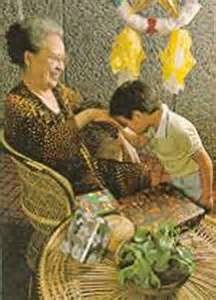The Philippines is still under Martial Law
Presidential Decrees has
the force of law, unless otherwise repealed and that includes Presidential
Decree (PD) no.1081 that placed the entire Philippines September
23, 1972 . Though formally lifted there may still be, technically and as a matter of law (“de jure”), a Martial Law. The subsequent Presidents after Mr. Marcos may issue directives and decrees (now termed as
Executive Orders or EO’s) on the basis of PD 1081 with the force similar to those that was proposed, deliberated and
passed by the both houses of congress and the senate. In effect, the Philippines may actually have two lawmaking bodies, the Legislative
Branch and the Executive Branch. A situation that this venue and anyone may
find inconsistent with the spirit of the 1987 Philippine Constitution,
specifically on matters like check and balance. Although not all executive
orders issued by Presidents subsequent to Mr. Marcos pertains to creation of new
laws or amendments thereto, the window for abuse is far and wide.
Should the constitution
have its way, lawmaking is the task entrusted to the legislative branch while
its execution is the responsibility of the President of the Republic as the
head of the executive branch. Of course there will be instances and
circumstances that the President may exercise legislative power, but still upon
express authorization of congress, such as in time of emergency, war and the
like.
Apart from the gaping
window of opportunity to commit abuse through the wield of legislative powers
by the executive branch, it is inconceivable that martial rule may still be impose and enforce in this generation of our children and grandchildren.through the remnants of presidential decrees and directives issued during the
Martial law period. Necessarily, those issuance should be discriminated and scrutinized for its relevance
and consistency with the current political state as mirrored by the Philippine Charter in the light of the fact, that it
was after all motivated, formulated and imposed under an authoritarian and dictatorial rule. The greatest fear is the extreme probability that It may
have been previously enacted particularly to suit small group of individuals; to cater for
selfish whim and greed, so much so, that it might and can be use again in any way by
similarly motivated powers would be.
An end to political hypocrisy through collective repeal is in order.
(“Presidential Decrees were issuances by the Chief Executive
that had the force of law. They were an innovation made by President Ferdinand
E. Marcos with the proclamation of Martial Law on September 23, 1972. They
essentially served to arrogate unto the Chief Executive the lawmaking powers
that previously pertained to the Congress of the Philippines

Comments
Post a Comment